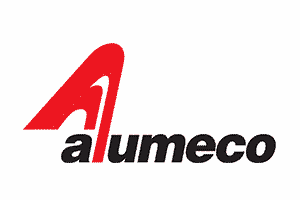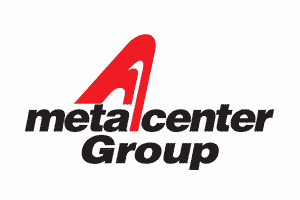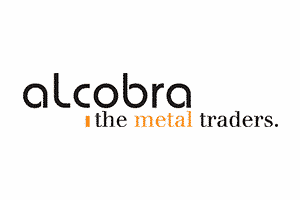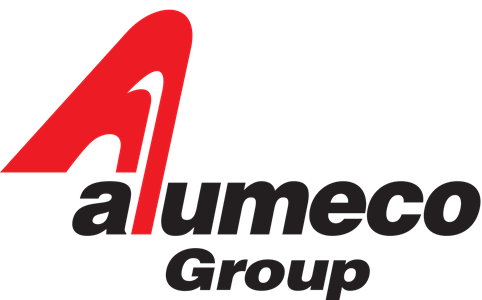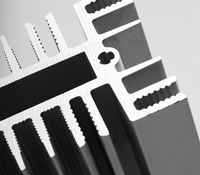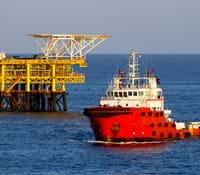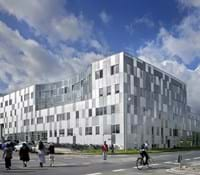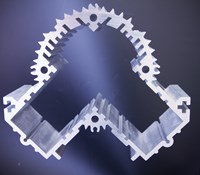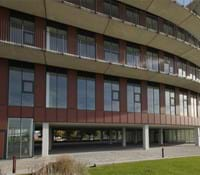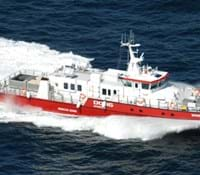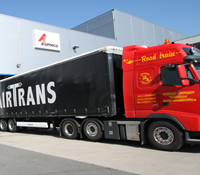Stainless steel surface finishes
| ASTM | EN | Production | Look and applications |
|---|---|---|---|
| BA | 2R | Cold rolled, bright annealed and skin passed. Smooth, bright, almost mirror reflective surface. Typical (Ra): 0,05-0,1µm |
2R is manufactured in a comparable manner to 2B, with the annealing process taking place in a special oven free of oxygen. This results in a reflective surface with a minimal roughness of approximately 0.05 - 0.1µm.
2R surfaces are commonly used in scenarios where reflectivity is crucial, but accuracy is not a primary concern. For example:
|
| No. 1 | 1D | Hot rolled, heat treated and pickled. Typical (Ra): 3,0-7,5µm |
1D surfaces are typically used for construction and non-decorative purposes. The surface has a high roughness and is therefore sometimes polished afterwards. The look is dull and free of milling scale.
|
| No. 2B | 2B | Cold rolled, final rolling with polished rolls, heat treated, annealed, pickled and skin passed. The surface is smooth and slightly shiny. Typical (Ra): 0,1-0,8µm |
2B has a smooth, moderately reflective surface with good flatness control.
Due to this appearance, 2B is used in architecture applications, when surface uniformity is not required.
Other common applications include:
|
| No. 2D | 2D | Cold rolled, heat treated and pickled. Smooth, but with a rougher, less reflective surface than 2B. Typical (Ra): 0,2-0,8µm |
2D is not rolled with polished rolls in the end. This results in a dull slightly darker, less reflective surface, like the 1D finish. Common applications for 2D stainless steels are:
|
| No. 3 | 1G-2G | The (mostly cold rolled – 2B) material is directionally wet-polished with an abrasive belt of grit 100-120 and creates a satin-like finish commonly used in the industry. Typical (Ra): >1,0µm |
After the polish, the material has a light, but matte finish, which is often used for further polishing. It is typically used for decorative purposes in interior/exterior architecture but also used in kitchen and other home applications. Other applications of this finish are:
|
| No. 4 | 1J-2J | This directionally wet-polished finish is achieved by using the finer grit 120-180. The No.4 satin-like surface is among the most popular surfaces. Typical (Ra): 0,2 – 1,0µm |
The No.4 finish looks smoother and brighter than the No.3 finish and has a fine, slightly reflective surface structure. Due to its look, the surface is one of the most popular and widely used in various industries. Examples are:
|
| No. 5 | 2K | This directionally wet-polished finish is achieved by using a series of abrasive materials (sandpaper & wirebrush) to create a uniform and consistent surface texture without imperfections. Stainless steel surface No. 5 is a type of finish commonly used in industrial and architectural applications. It is also known satin or brushed finish. Typical (Ra): 0,5-0,8µm |
The surface is characterized by a matte, non-reflective appearance, with a series of fine parallel lines running in one direction.
Compared to other finishes, No. 5 has a slightly rougher texture, which makes it more resistant to scratches and abrasions. It also has a slightly higher coefficient of friction, which can make it easier to grip and handle in certain applications. |
| No. 6 | 1K-2K | This non-directional wet-polished finish is even finer than the No.4 polishing and achieved by wet-polishing the surface with a grit 240-320 abrasive belt. Typical (Ra): <0,5µm |
The No.6 finish looks smoother than the No.4 finish and is less reflective than the No.4 finish. It is less used nowadays but has been very popular in architecture of the late 20th century.
|
